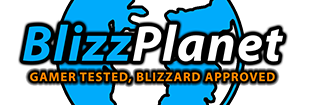Slorkuz posted an article about the plans for the Archaeology secondary profession, and revealed things unknown until now. As a newly Illustrious Grand Master Archaeologist this makes all the pain and gore of searching artifacts truly worthwhile.
You can obtain epic weapon rewards and use the keystones to grant a raid buff. These keystones can be sold at the Auction House. These features are not yet implemented in the current Beta build. Keystones currently give +12 fragments, but the live version will only grant +5 and grant buff attributes yet to be known. Each race has its own unique keystone, so buff attributes might vary.


[BLUE]Hunting the unknown, discovering the lost, knowing the forgotten.
The Explorers’ League of Ironforge is redoubling its efforts to learn the secrets of the past. The league has begun teaching the discipline of archaeology to all members of the Alliance in a bold attempt to procure as many ancient relics as possible. This initiative is being matched by the campaign of the Reliquary — a Horde faction formed from an unknown council based in Silvermoon. The Reliquary is training members of the Horde in the art of the dig and challenging them to find any and all artifacts of historical significance before the Explorers’ League does. Each side now jockeys for position, relishing in the chase, vying for control of time-lost relics, and jealously guarding any valuable information the objects may impart.
Archaeology is a new secondary profession introduced in Cataclysm that can be trained along with Cooking, First Aid, and Fishing. After learning Archaeology from the appropriate trainer in a major city, the newly educated treasure hunter will be presented with an Archaeology Journal to track his or her progress, as well as a surveying tool to facilitate discoveries.
The main purpose of Archaeology, of course, is to find artifacts! Artifacts are items lost to history that carry with them a story of the past. While their worth is mainly obtained from the information they impart and the simple joy of discovering them, rarer artifacts represent treasures of sizeable value. Every artifact has an origin, and these origins can be traced back to the races that now inhabit Azeroth and Outland. Research projects are presented in the Archaeology Journal, categorized by the races they’re associated with. The fragments needed to complete each research project can be discovered by visiting dig sites.
At any time, players can open their maps and see these dig sites outlined for them across Azeroth and Outland. Upon reaching a dig site, a player can then search for artifact fragments with the survey tool. The survey tool arms the Archaeologist with two unique devices: a telescope and a distance indicator. The distance indicator will change from red to yellow to green as the treasure hunter gets closer, while the telescope will keep pointing the player in the right direction. When the player locates and digs up the treasure, it will provide the Archaeologist with fragments that are collected in the journal. This process will eventually result in a complete artifact.
Completing the rarer artifacts can reward the Archaeologist with unique items, including epic-quality weapons, mounts, and non-combat pets. In addition to the normal artifact fragments used to finish all research projects, special fragments called keystones can also be found by higher-level players. These fragments are valuable to all Archaeologists because they count as five normal fragments for most research projects, and they can be freely sold and traded. Archaeologists of exceptional skill can also use keystones to grant benefits to their friends in high-end raid instances.
Whether you’re an avid treasure hunter with a drive to discover all the world has to offer, someone interested in uncovering the mysteries of the past, or an explorer looking to obtain items of power, Archaeology is your ticket to a glorious adventure.[/BLUE]




